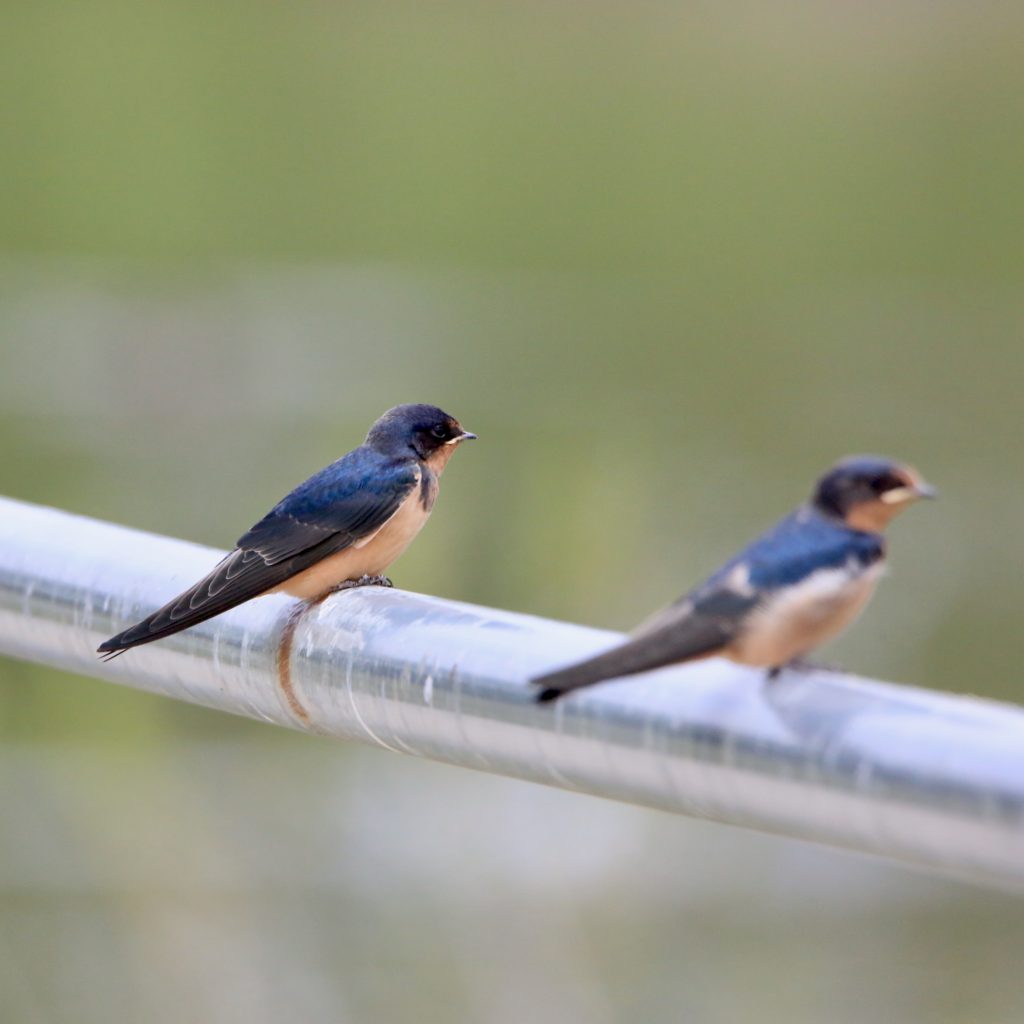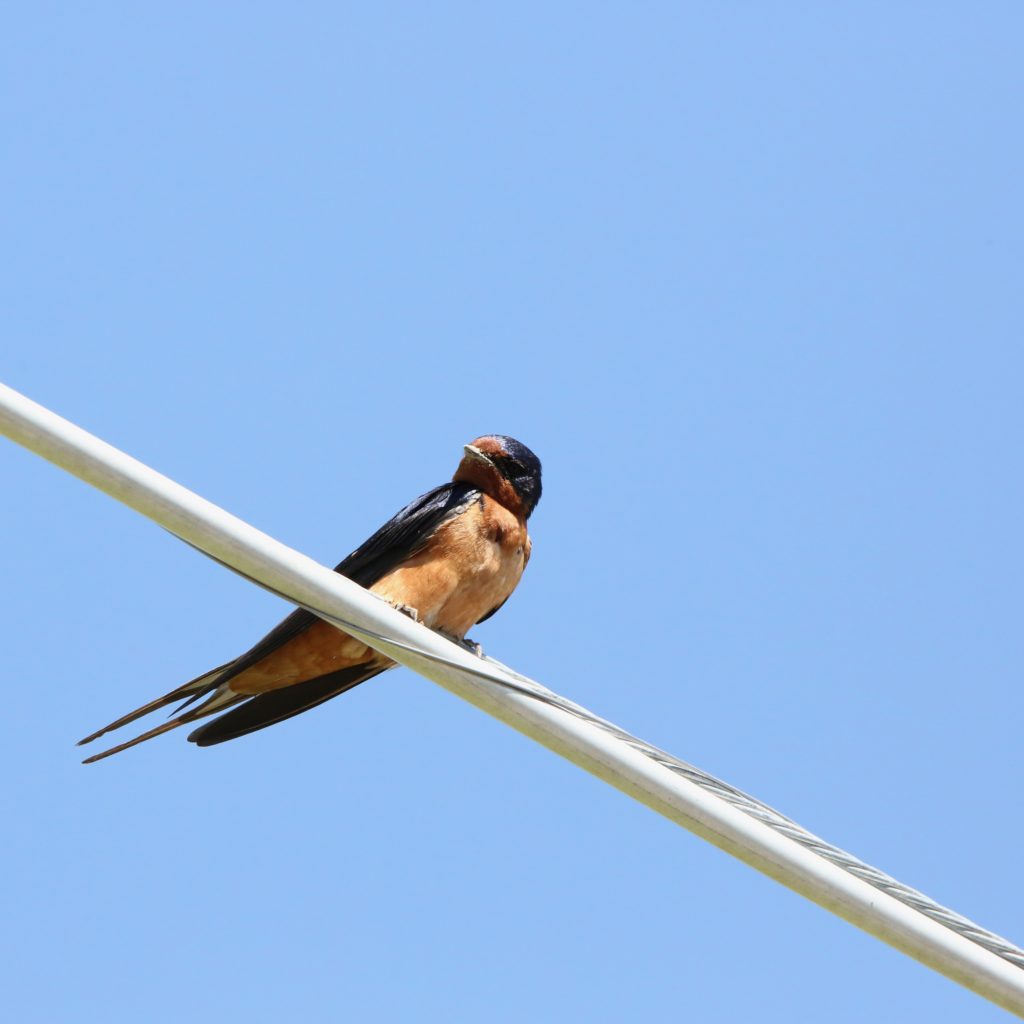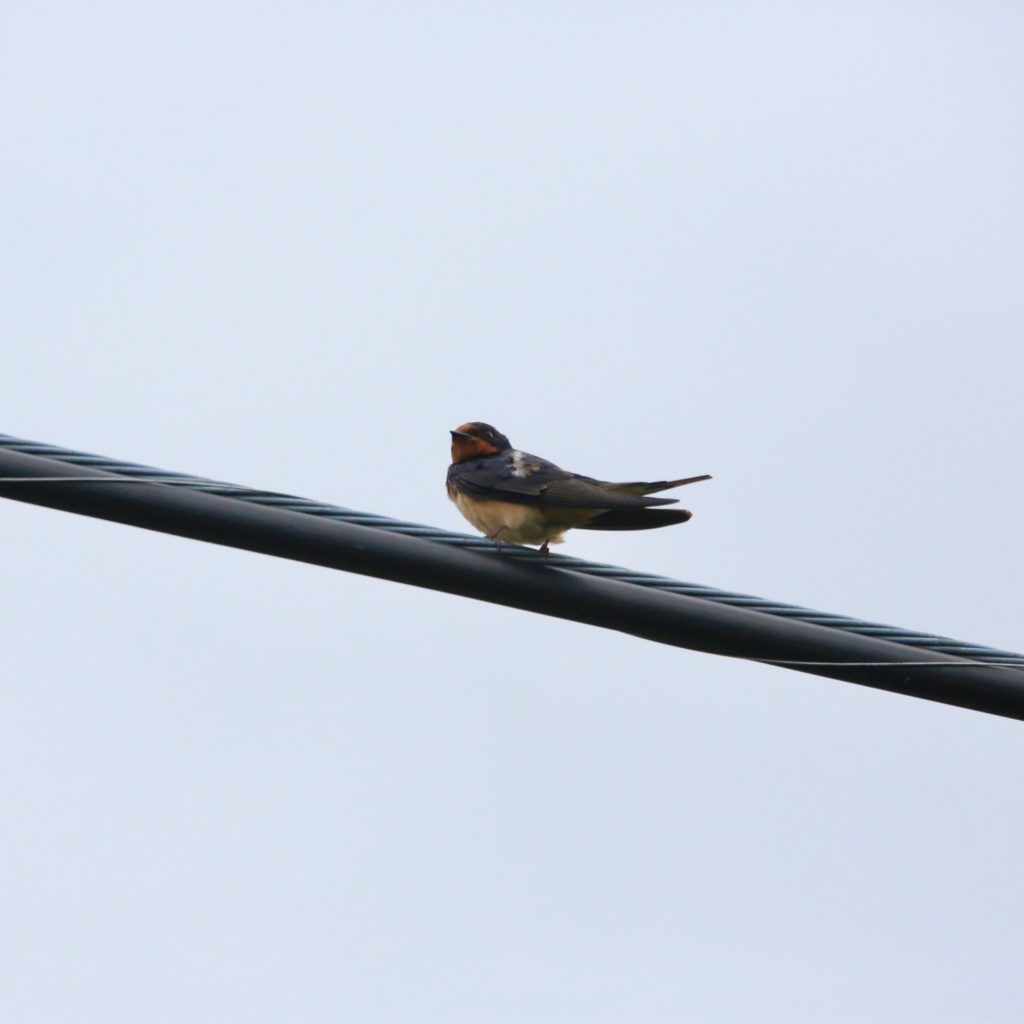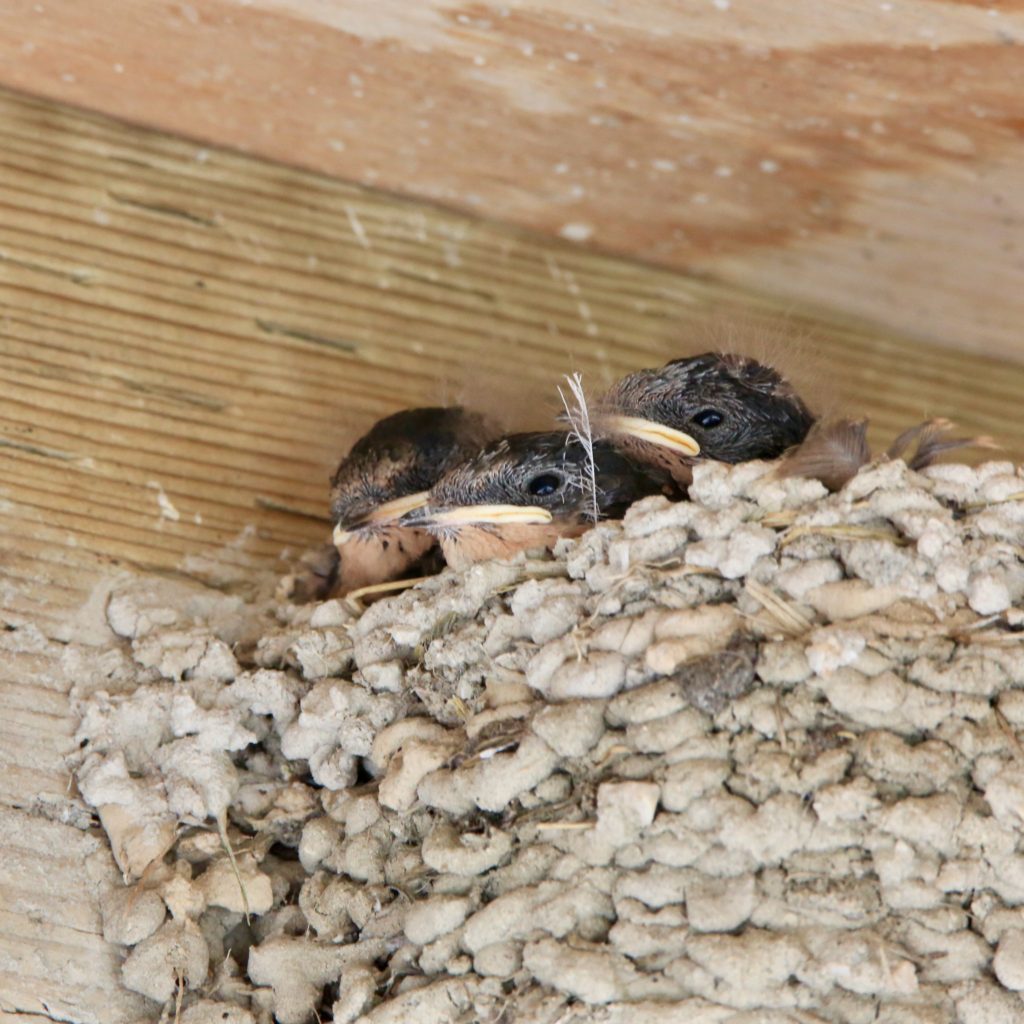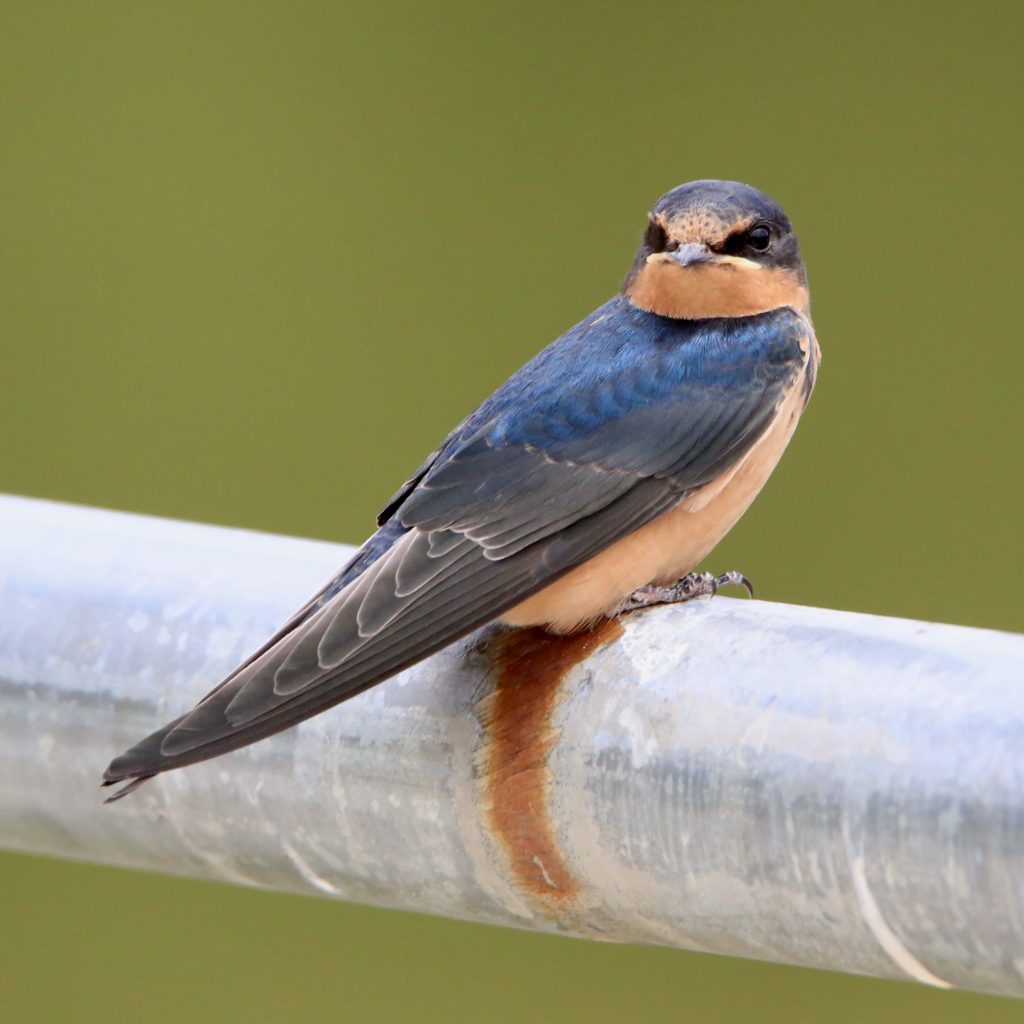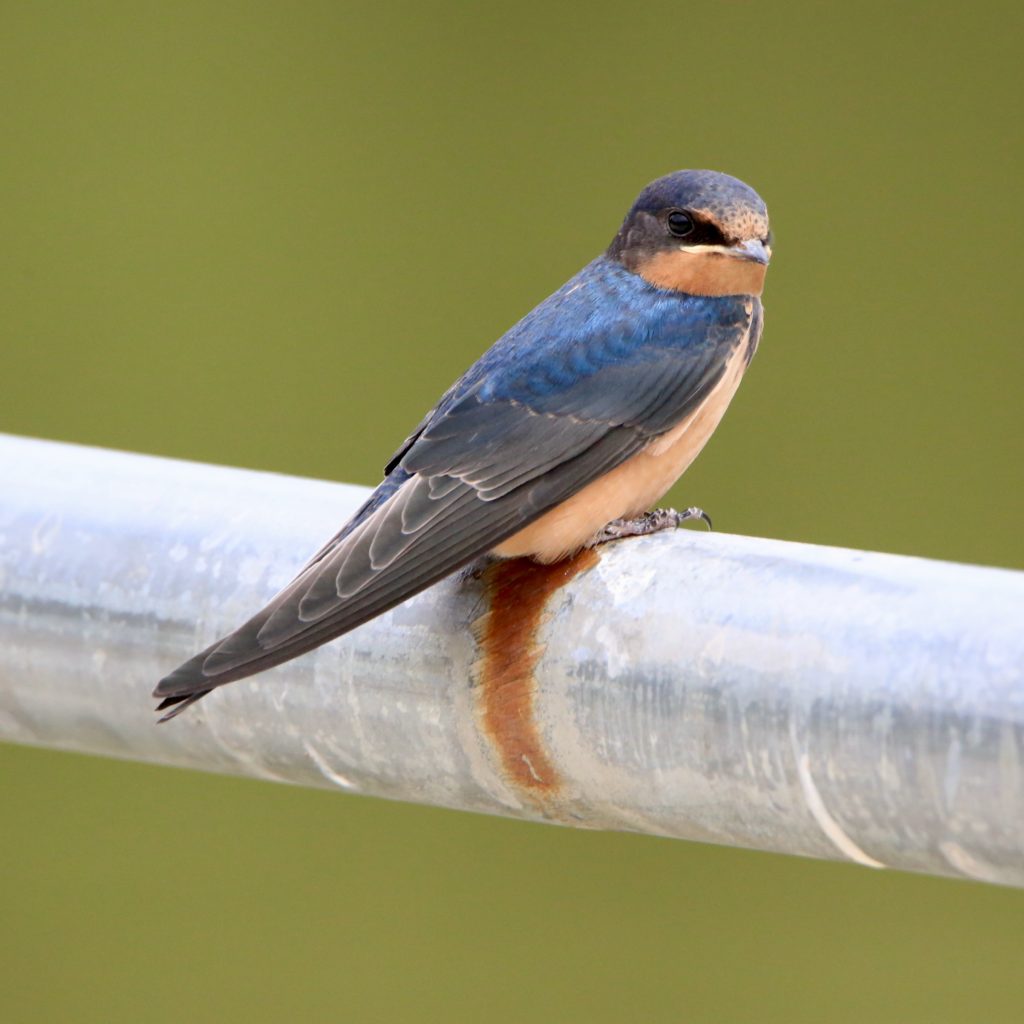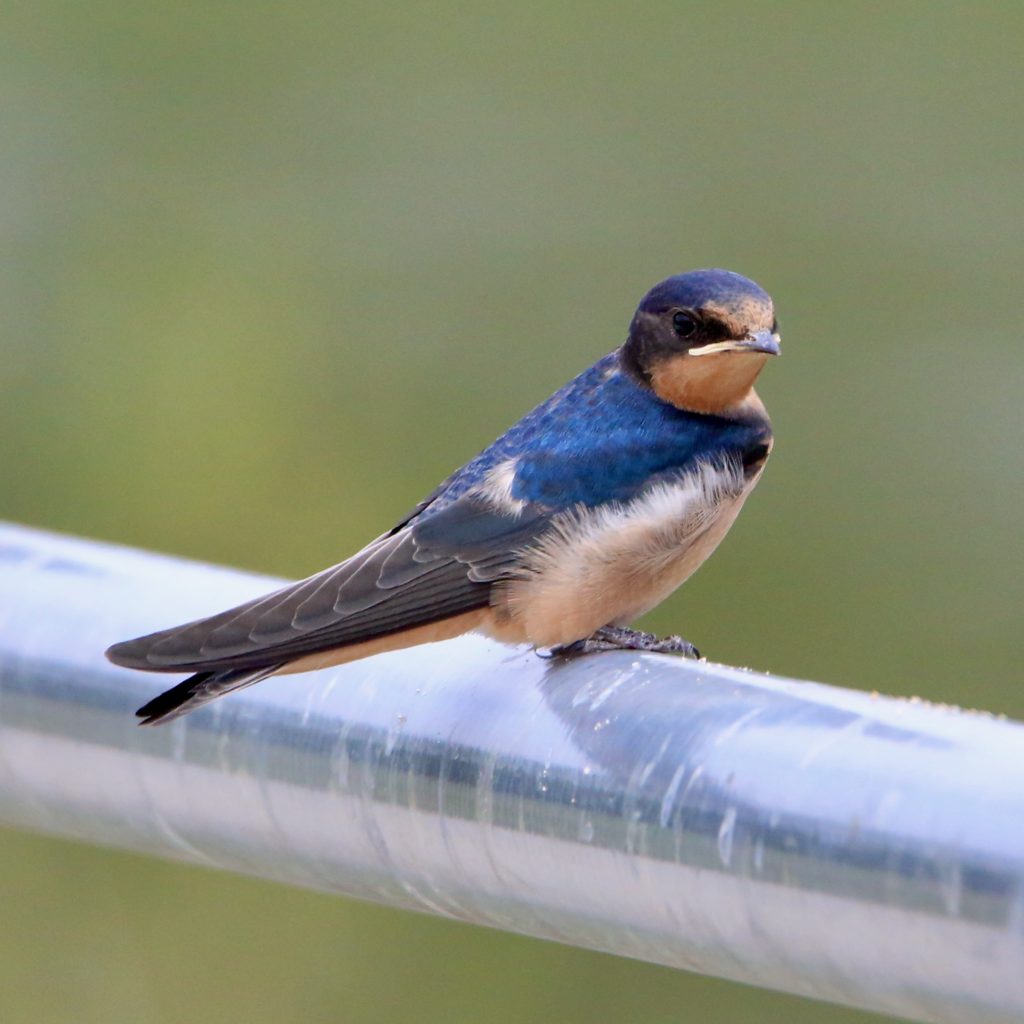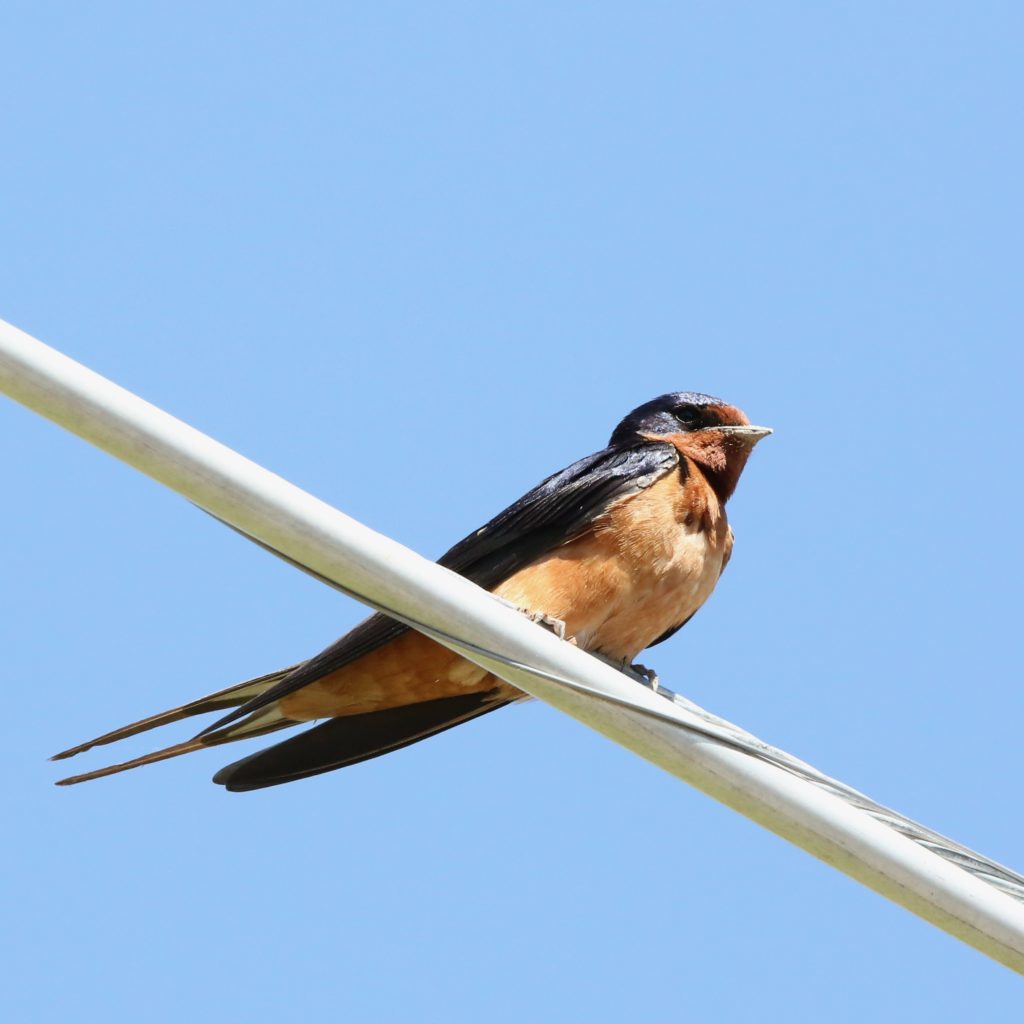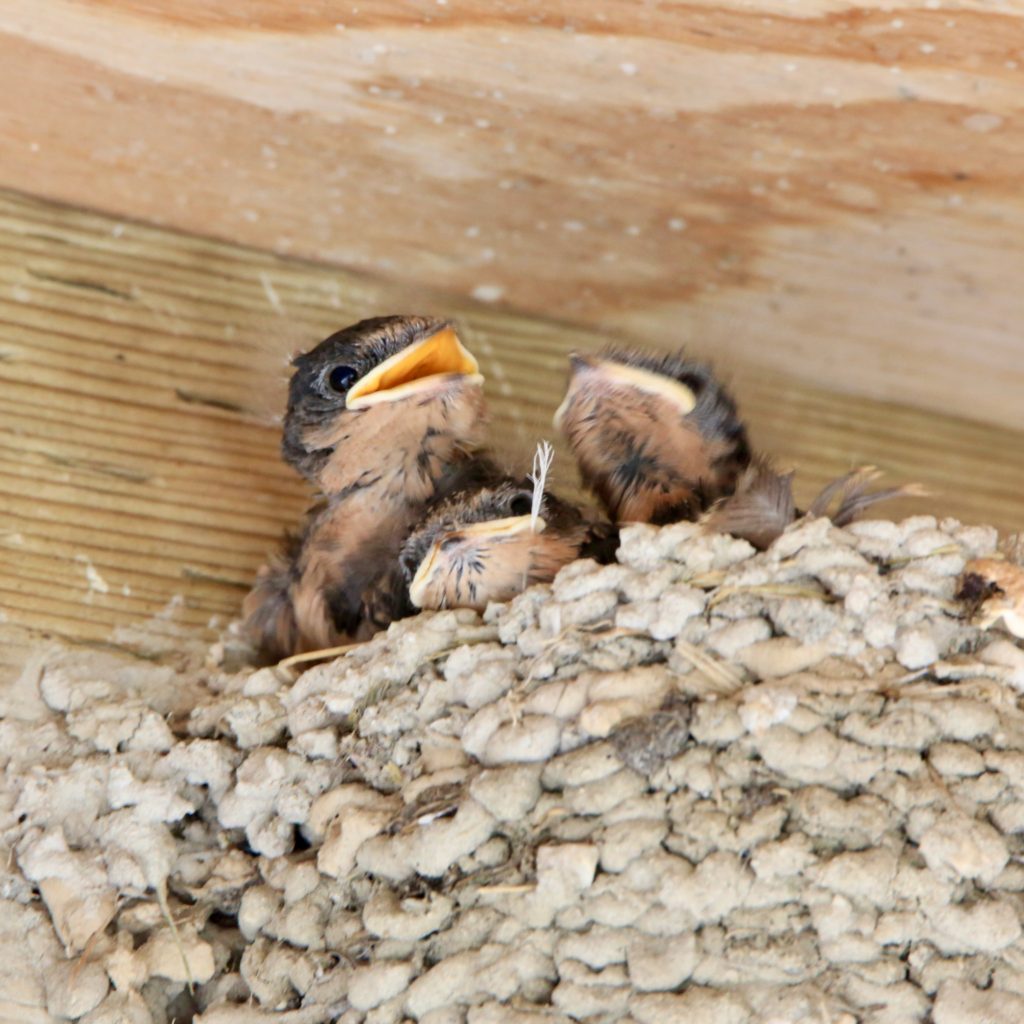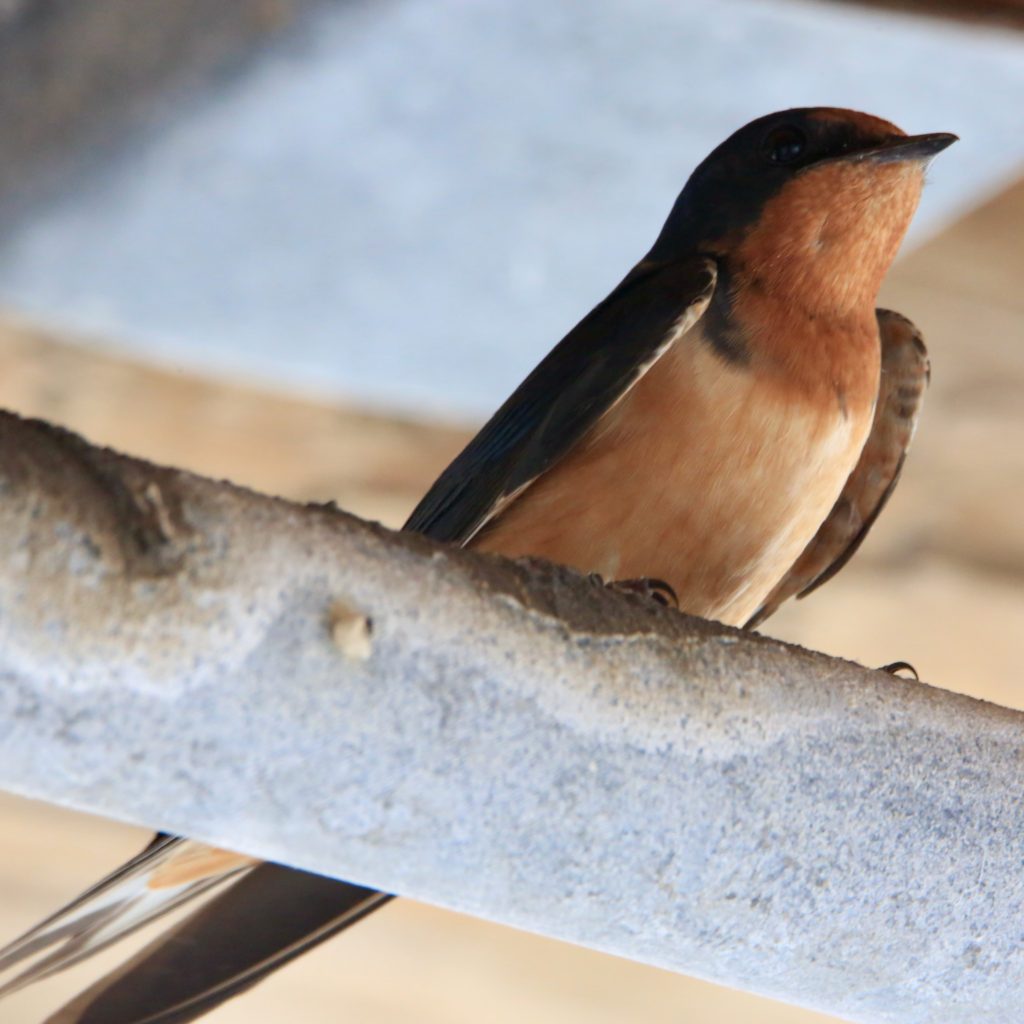
A Barn Swallow is a fun bird to see while bird watching. Below are some tips to help you identify Barn Swallows. We have also put together a list of fun Barn Swallow T-shirts, Barn Swallow bird patches, birdhouses, bird feeders, binoculars, stickers, and other fun bird-watching items.
About Barn Swallows
It is a cobalt blue bird darting gracefully over barnyards and fields, and also over open water in search of prey. Its forked tail sets it apart from all other North American Swallows. Barn Swallows fly low inches above the ground or water. They exclusively build their nests on man-made structures.
Description and Identification
The adult male Barn Swallows have steel-blue upperparts and a rufous forehead, chin, and throat, which are separated from the off-white underparts by a broad dark blue breast band. The outer tail feathers of the birds are elongated, and there is a line of white spots across the outer end of the upper tail. The female Barn Swallows, though similar in appearance to males, have shorter tail streamers. The females’ blue underparts and breast band are less glossy, and the underparts are pater. The juvenile Barn Swallows are browner and have a paler rufous face and whiter underparts. They also lack the long tail streamers like the adults.
Barn Swallow Color Pattern
They have a cobalt blue back, tail, and wings. Their underparts are rusty and orange. The blue crown and face differ from its cinnamon-colored forehead and throat. The Barn Swallow has white spots under its tail visible only when they are in flight. Male bodies are more brightly colored than females.
Barn Swallow Size
Barn Swallows appear cone-shaped when perched up on a fence. Their neck is not very visible because of its broad shoulders and pointed wings. Their tails stretch well beyond the wingtips and the outer feathers give it the deep fork. Adults are 15-19 centimeters in length and weigh 17-20 grams. They have a wingspan of 29-32 centimeters.
Barn Swallow Behavior
Barn Swallows snatch insects from water or ground surfaces and carry them to a height of almost 100 feet. They have steady and strong wing beats as they fly straight with rare but not uncommon glides. They are able to execute tough turns and make steep dives in seconds.
Barn Swallow Diet
Barn Swallows primarily feed on insects, along with beetles, bees, wasps, ants, butterflies, moths, and other flying insects. The birds typically feed in open areas above shallow water or the ground, often following animals, humans, or farm machinery. On the wintering grounds, flying ants make up a major part of their diet. The Swallows also feed on moths, damselflies, grasshoppers, spiders, and snails. The birds usually take relatively large, single insects rather than feeding on swarms of smaller prey. Occasionally, Barn Swallows eat a few berries or seeds. They also pick up grit and small pebbles, or eggshells, and oyster shells to digest insects or add required calcium to the diet. Their diet menu is quite extensive from beetles, bees, and wasps. They feed on grit to assist them with digestion or sometimes egg or oyster shells.
Barn Swallow Habitat
The preferred habitat for Barn Swallows is open country with low vegetation, such as pastures, meadows, and farmlands, preferably near water. The swallows usually avoid heavily wooded or precipitous areas and densely built-up locations. The birds occur in open or partly open terrain, generally avoiding very dry country and unbroken forest. They often breed around farms, buildings, towns, and forages in open areas throughout most of the continent, including suburban parks and ball fields, beaches, and over open water such as lakes, coastal waters, and ponds.
They usually feed in open habitats as they have adapted well to the increased human contact. Their nests are quite easy to spot inside sheds or barns.
Range and Migration
Barn Swallows are the most widespread species of Swallow in the world. They are found in Asia, Africa, Europe, and America. In North America, Barn Swallows breed from Alaska east to Newfoundland, Canada and south to California, and east to Northern Florida. The Swallows also breed in northern Europe, North-eastern Asia, The Middle East, and Northern Africa. They are long-distance migrants. Southbound fall migration may begin by late June in Florida or early July in Massachusetts. The birds return as early as late January in southern California to mid-May at Alaskan breeding sites. Barn Swallows are vagrants to distant areas, such as Hawaii, Bermuda, Greenland, and Antarctica.
Nesting
Barn Swallows often mate in the air, and the male and female Swallows build their nest together. Several pairs may nest in the immediate area but do not form dense colonies like a few colonies. The original nest sites are in sheltered crevices in cliffs or shallow caves. The cup-shaped nests are often under a rock ledge or in the rafter or eaves of buildings. The female Swallows lay four to six eggs, and both parents help incubate the eggs and care for the young. The male Barn Swallows defend their small territory around the nest site and aggressively chase away other male swallows.
Barn Swallow Lifecycle
Barn Swallow pairs search for a number of potential sites for their nests flying up and hovering over a location. Both male and female parents build the nest using mud. Females lay 3 to 7 eggs and incubate them over a period of 12 to 17 days. It takes 15 to 27 days before the hatched young ones can be able to fly out of the nest.
Ornithology
Bird Watching Academy & Camp Subscription Boxes
At the Bird Watching Academy & Camp we help kids, youth, and adults get excited and involved in bird watching. We have several monthly subscription boxes that you can subscribe to. Our monthly subscription boxes help kids, youth, and adults learn about birds, bird watching, and bird conservation.
- Kids Bird Watching Monthly Subscription$10.00 / month
- Kid & Adult Bird Watching Starter Pack Subscription$10.00 / month and a $72.00 sign-up fee
- Kids Bird Watching Starter Pack Subscription$10.00 / month and a $19.00 sign-up fee
Bird Watching Binoculars for Identifying Barn Swallows
The most common types of bird watching binoculars for viewing Barn Swallows are 8×21 binoculars and 10×42 binoculars. Bird Watching Academy & Camp sells really nice 8×21 binoculars and 10×42 binoculars. You can view and purchase them here.
- Birding Binoculars$49.99
- Kids Binoculars$13.99
Barn Swallow T-shirts
If you love the Barn Swallow you should purchase a Bird Watching Academy & Camp T-shirt. To help support bird conservation we donate 10 percent to bird conservation activities.
Barn Swallow Iron On Patches
Kids, Youth, and Adults love to collect our Bird Watching Academy & Camp iron-on patches. Our bird-watching patches help you keep track of the birds you have seen and identified. You can also display the patches on our Bird Watching Academy & Camp banners.
The Barn Swallow is a great iron-on patch to start your collection with. The patches are durable and can be sewn on or ironed on to just about anything.
- Barn Swallow Iron on Patch$2.99
- Bird Banner$10.99
Barn Swallow Stickers
Stickers are a great way for you to display your love for bird watching and the Barn Swallow. We sell a monthly subscription sticker pack. The sticker packs have 12 bird stickers. These sticker packs will help your kids learn new birds every month.
Bird Feeders For Barn Swallows
There are many types of bird feeders. Bird feeders are a great addition to your backyard. Bird feeders will increase the chances of attracting birds drastically. Both kids and adults will have a great time watching birds eat at these bird feeders. There are a wide variety of bird feeders on the market and it is important to find the best fit for you and your backyard.
Best Bird Houses for Barn Swallows
There are many types of bird houses. Building a bird house is always fun but can be frustrating. These 4 bird houses have become our favorites. Getting a bird house for kids to watch birds grow is always fun. We spent a little extra money on these bird houses but they have been worth the higher price and look great.



